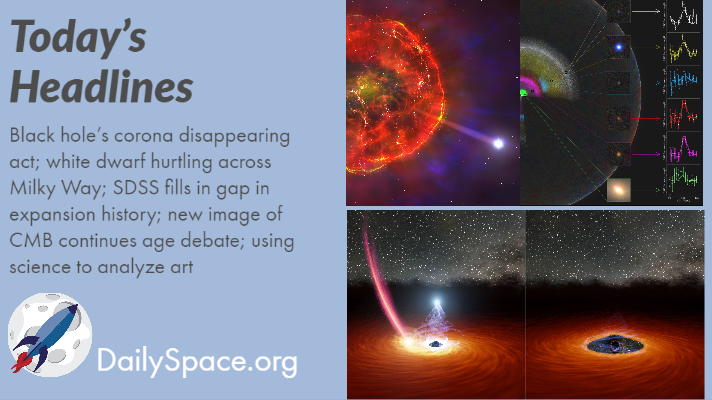
Jul 20, 2020 | Cosmology, Daily Space, Rockets, Supermassive Black Holes, White Dwarfs
Join us today as we examine one possible reason a black hole’s corona may have disappeared. Be on the lookout for a runaway white dwarf whose supernova sent it hurtling across the Milky Way. We take a look at new survey results that fill in an 11-billion-year gap in the expansion of the universe. A new image of the cosmic microwave background suggests the universe is 13.77 billion years old, give or take 40 million years. And as a fun bonus, scientists use celestial sleuthing on a Vermeer painting to determine when it was actually painted.
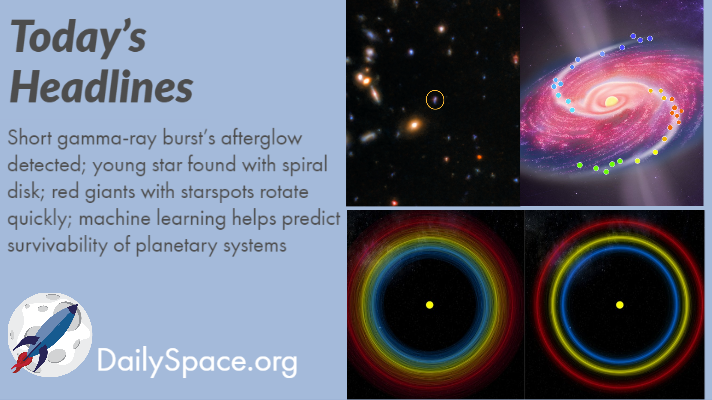
Jul 14, 2020 | Cosmology, Daily Space, Exoplanets, Gemini North, Stars
First, we look at how researchers detected the afterglow of a short gamma ray burst a mere 3.8 billion years after the Big Bang. Then we examine the discoveries of a spiral structure in the disk of a young, heavy star and how red giant stars with large starspots spin faster than those without. And finally, we see how machine learning can be used to predict what planetary systems are most likely to survive.
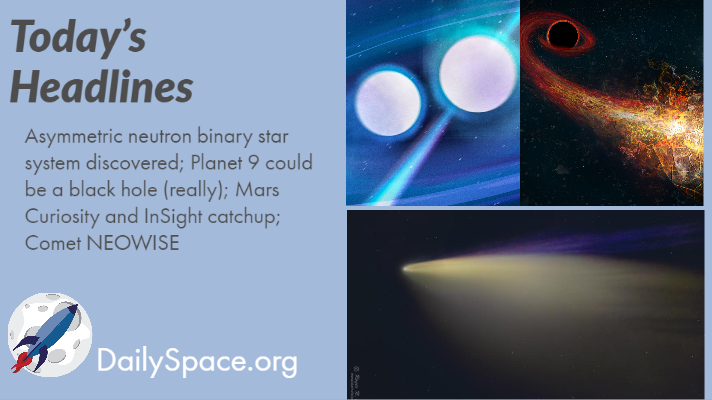
Jul 13, 2020 | Black Holes (Stellar), Comets, Cosmology, Curiosity, Daily Space, Mars, Neutron Stars / Pulsars, Our Solar System
Today’s news comes from all over and starts with a pair of pulsars headed toward merger in 500 million years. This system will help us understand August 2017 observations of a neutron star merger. From one high mass object to another, we turn to look at Avi Loeb’s new idea that Planet Nine might actually be a primordial black hole, what to look for if it is. We also catch up on Mars and its current robot explorers: InSight and Curiosity. Finally, we discuss how to see naked eye comet NEOWISE in the evening sky.
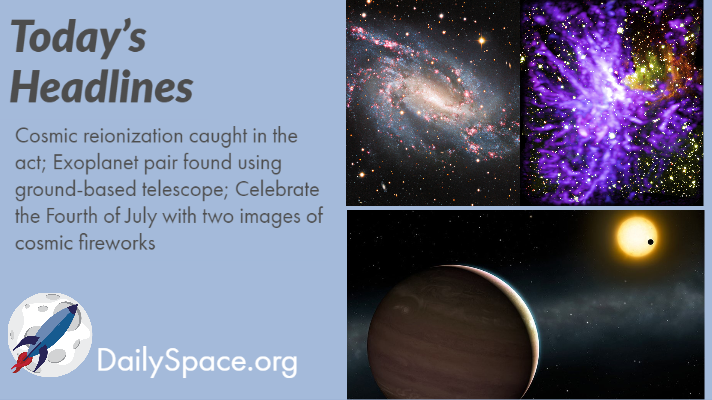
Jul 3, 2020 | Cosmology, Daily Space, Exoplanets, Observatories, Star Forming Region, Uncategorized
Join us today as we talk some more about cosmic reionization and the mounting evidence it occurred very early in the Universe. We also look at two exoplanets, found using a ground-based telescope, that are gravitationally interacting. And we celebrate the Fourth of July here in the United States with some newly released images of cosmic fireworks.
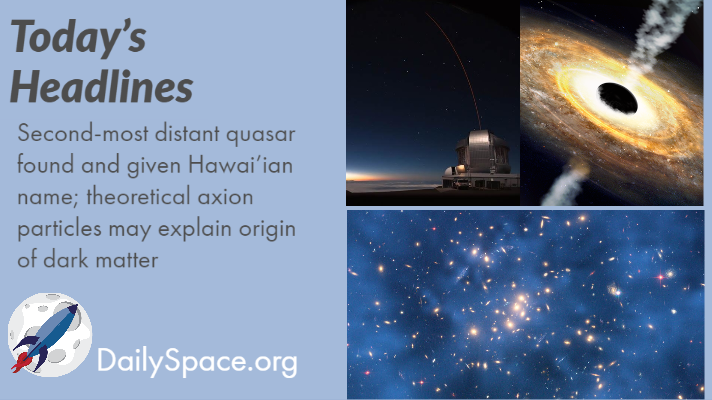
Jun 29, 2020 | Cosmology, Daily Space, Dark Matter, Gemini South, Quasar, Supermassive Black Holes
Join us today as we look at big news on a big quasar! Pōniuāʻena is the second-most distant quasar ever found, and its existence challenges conventional black hole formation theory. Also, we explain how the theoretical axion particle might be involved in the origin of dark matter.
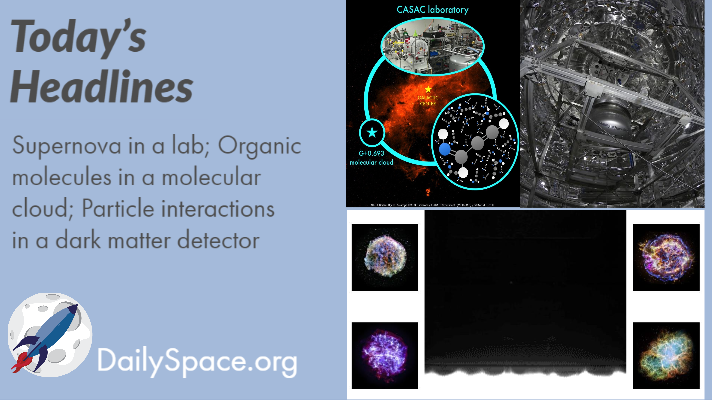
Jun 18, 2020 | Astrobiology, Cosmology, Daily Space, Dark Matter, Supernovae
Join us today while we take a look at a laboratory recreation of a supernova. We’ll also talk about the discovery of another amino acid precursor molecule in an interstellar cloud. Finally, we call attention to news that a dark matter detector has possibly seen some weird particle interactions and what that could mean.








 We record most shows live, on Twitch. Follow us today to get alerts when we go live.
We record most shows live, on Twitch. Follow us today to get alerts when we go live.